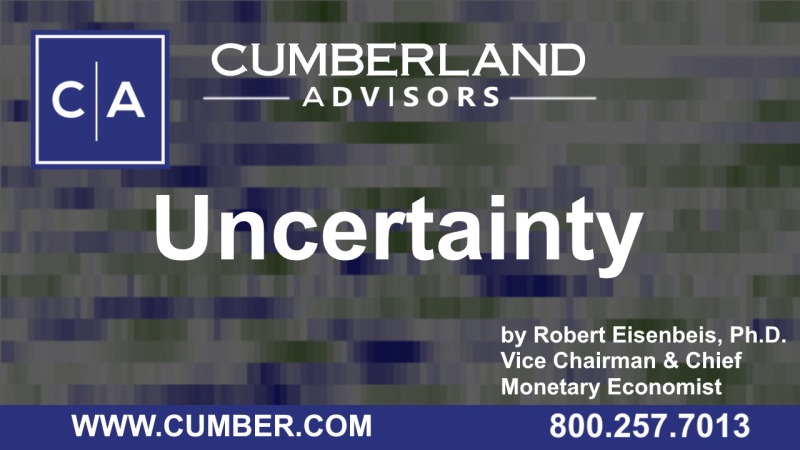The first week in December, on the front end of the Federal Open Market Committee (FOMC) meeting on December 14-15, has hit markets with a series of events that has resulted in a spike in volatility and generally negative news that has been difficult, if not impossible, for participants to digest. Set against the background of what was believed to be a sharp recovery in output and employment in this fourth quarter is the concerning inflation situation that presently exceeds the FOMC’s 2% target by a factor of two.

On Tuesday, November 30, and despite the widely held belief that the FOMC would continue policy accommodation and viewed the inflation situation as transitory, Chairman Powell shocked markets by suggesting not only that the FOMC might accelerate the pullback in its asset purchases from what was suggested following its November meeting but also that he now regarded the inflation situation as more concerning and not likely to be transitory. He also cited the potential risks associated with the omicron variant of the COVID virus. Whether the subsequent drop in financial markets by about 2% signaled a new threat of a taper tantrum is open to question. Missing from the policy discussion was what the FOMC might do in the face of increased uncertainty, and we won’t get clues on that until the new projections are released following the December FOMC meeting.
Not only will the FOMC have updated projections at this next meeting, but it will also have access to the November jobs report produced by the Bureau of Labor Statistics. Economists had been forecasting a monthly increase of 573,000 jobs (https://www.cnbc.com/2021/12/03/jobs-report-november-2021.html) on the heels of an increase of 531,000 jobs in October; and ADP had estimated on Wednesday, November 1, that the economy had created 534,000. However, the BLS reported that a disappointing 210,000 had been created in November, and these data were collected prior to the recognition of the risks posed by the omicron variant. Gains were notable in Professional and Business Services (90,000), Transportation and Warehousing (50,000), Construction (31,000), and Manufacturing (31,000), while a decline occurred in Retail (-20,000). Markets were understandably disappointed in the overall report, and the Dow Jones average was down as much as 435 points before midday. On the positive side, the unemployment rate declined to 4.2%.
So, going into the FOMC meeting, uncertainty is the main issue to be addressed. Even with a strongly growing economy, the jobs situation is inconsistent; and we are still not at what the FOMC is likely to view as full employment. Inflation now looks to be not just a transitory problem; and when we look at the components of the inflation index, the patterns are not as clear as some might suggest. There clearly are and have been steady increases in prices related to the auto industry and some sectors of food and services, but it is hard to see a consistent impact of demand changes or supply shocks when it comes to particular sectors, which is how policy makers so far have been viewing the causes of inflation.
Then there is the virus. Just when we thought the corner might have been turned, the Omicron variant emerges, with all the associated uncertainties and questions about its transmissibility, symptoms, and impacts on various age groups. None of these are yet known and will not be knowable for some while. The FOMC is faced with making a policy decision in the face of these uncertainties. Does it accelerate the tapering when markets are volatile and risk a taper tantrum? Would an acceleration imply that reining in inflation is now the primary goal, and the full employment objective goes to the back seat? Does it make sense, given the virus, to proceed; or might the better option be to simply wait and let events play out for a time, until the picture comes clearer? How does the Committee craft a statement to explain exactly what it is doing and why at this point? The challenges are many and options few.
Links to other websites or electronic media controlled or offered by Third-Parties (non-affiliates of Cumberland Advisors) are provided only as a reference and courtesy to our users. Cumberland Advisors has no control over such websites, does not recommend or endorse any opinions, ideas, products, information, or content of such sites, and makes no warranties as to the accuracy, completeness, reliability or suitability of their content. Cumberland Advisors hereby disclaims liability for any information, materials, products or services posted or offered at any of the Third-Party websites. The Third-Party may have a privacy and/or security policy different from that of Cumberland Advisors. Therefore, please refer to the specific privacy and security policies of the Third-Party when accessing their websites.
Cumberland Advisors Market Commentaries offer insights and analysis on upcoming, important economic issues that potentially impact global financial markets. Our team shares their thinking on global economic developments, market news and other factors that often influence investment opportunities and strategies.

